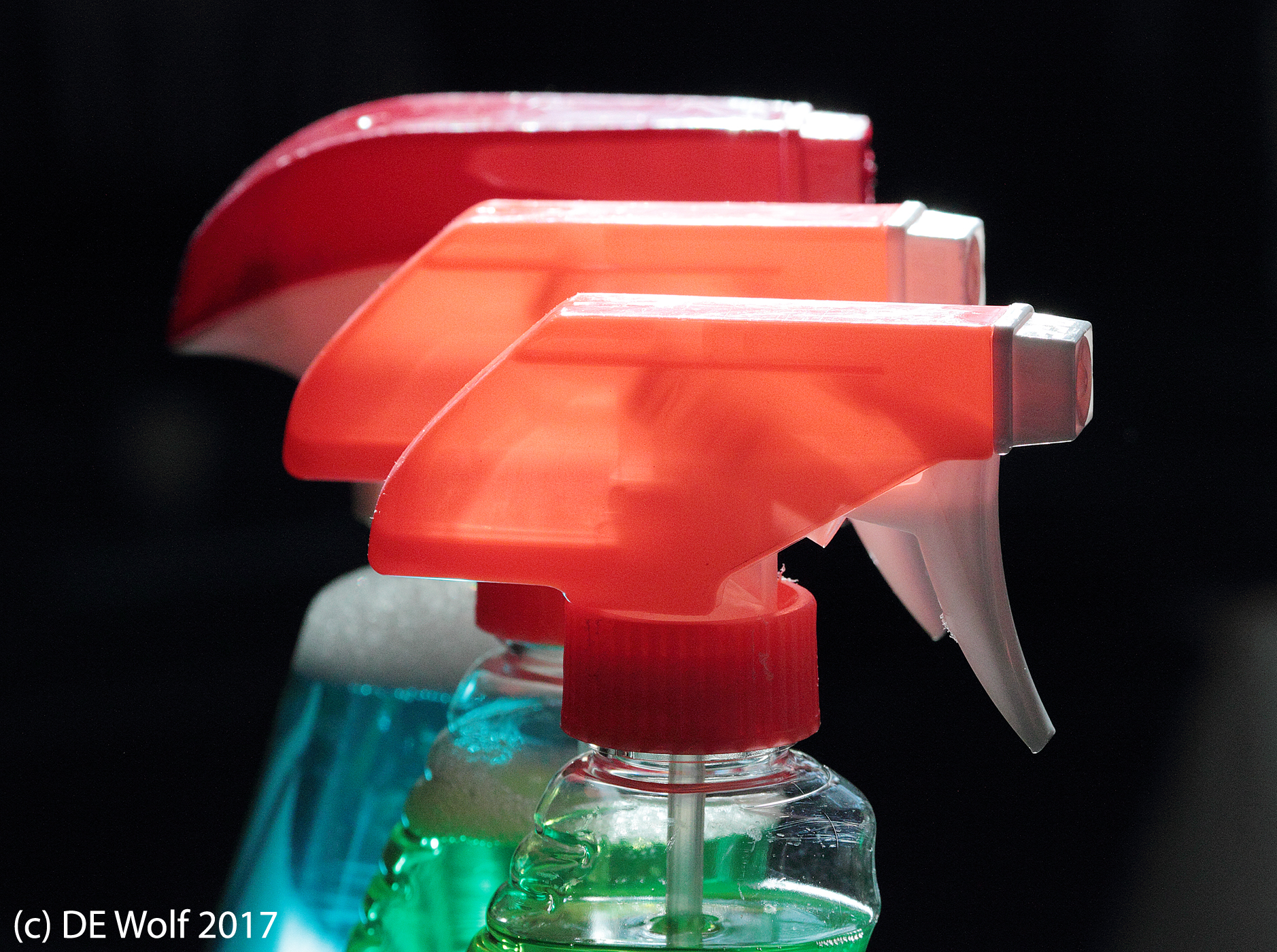It was a beautiful sunny holiday morning here in Massachusetts, and I took a few moments to photograph the birds outside my window. When I retreated to my computer I noticed the dramatic translucence that a set of cleaning spray bottles betrayed in a winter’s sunlight. The solar rays are lusciously long and low in January. I did a bit of rearranging and took the image of Figure 1, with the wrong lens. I say the wrong lens because I had my huge birding lens on my camera and at 250 mm I really had to stand back and got a much more flattened effect than I would have gotten with my “regular” lens. Still the focus is progressive back to front, with the pumping mechanism revealed and illuminated in the font two spray heads.
Having the wrong lens on your camera is a common problem, and you’ve got to adapt. When I go out in the woods, my long lens is sufficient weight. So I usually leave other lenses behind. And sometimes, even if you have the “right” lens with you, there isn’t time to switch. I am reminded of a trip to Holland in my youth, where one of my fellow travelers had a Leica with a lens turret. This was a remarkable device. You just dialed in the lens you wanted and snap. This is almost a joke, because the glorious Leica was ever so silent. Its shutter made an almost inaudible click. Silent enough not to alert smooching lovers at a Paris cafe’ to the camera’s presence. But the turret changed your camera, at least aesthetically, to a microscope.
So Figure 1 is my image of the cleaning sprays made with the “wrong lens.” It represents that rare moment for me when the photograph is all about the color. I actually like the depth of focus obtained, the dark but not quite black background, and the slight but dramatic bokeh.
Canon T2i with EF100-400mm f/4.5-5.6L IS USM lens at 250 mm,ISO 1600, Aperture Priority AE Mode, 1/640th sec at f/10.0 with -1 exposure compensation. Oh, and I used spot metering on the front bottle’s nozzle.

